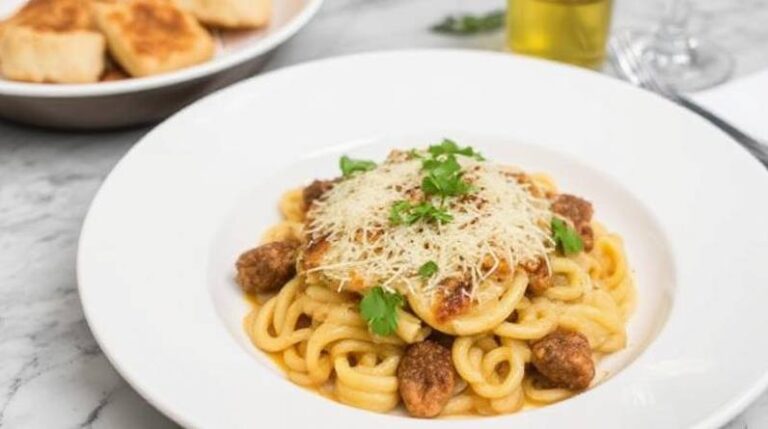Introduction
Levapioli has quietly become a modern food icon — a dish that blends tradition, versatility, and innovation. Originating from Italy’s rich culinary heritage, this humble creation has evolved into a global phenomenon, adapting to local flavors from Greece to Mexico. More than just a recipe, levapioli represents how food connects cultures through creativity.
In this article, we’ll explore levapioli’s journey, uncover its cultural adaptations, and discover why it’s becoming a favorite among chefs and home cooks alike. You’ll also learn how to make your own version, practical serving ideas, and even its surprising nutritional benefits.
The Origins of Levapioli: A Taste of Italian Tradition
Levapioli traces its roots to rural Italy, where resourceful cooks crafted simple, satisfying dishes using flour, water, and seasonal ingredients. Much like ravioli or calzone, it embodied the Italian philosophy of “cucina povera” — transforming basic staples into extraordinary comfort food.
Key Components of Traditional Italian Levapioli
| Element | Description | Example Ingredients |
| Dough | Soft, pliable, made from flour and water | Wheat flour, olive oil, salt |
| Filling | Savory or sweet mixtures | Ricotta, spinach, seasoned meats |
| Cooking Method | Typically baked or fried | Olive oil frying or oven-baked finish |
| Serving Style | Often served with sauces or herbs | Marinara, basil, parmesan |
Each bite of traditional levapioli reflects Italy’s culinary soul — rustic, hearty, and full of flavor.
The Evolution of Levapioli Around the World
As the dish traveled beyond Italy, cooks from different regions began experimenting with their own versions. These variations celebrate local ingredients and flavors while preserving the essence of levapioli — a comforting, dough-wrapped meal.
1. Greek Spanakopita Levapioli
Inspired by the Greek classic spanakopita, this version swaps phyllo pastry for soft levapioli dough filled with spinach, feta cheese, and dill. The result? A delightful fusion that’s both flaky and rich.
Example pairing: Serve with tzatziki or lemon-garlic dip for a refreshing contrast.
2. Indian Masala Dosa Levapioli
In India, levapioli meets the masala dosa. The dough is replaced with a fermented rice-lentil crepe, encasing spiced potatoes infused with curry leaves and mustard seeds. It’s a flavor explosion of earthy spices and crispy texture.
Best enjoyed with: Coconut chutney or tangy sambar for an authentic South Indian twist.
3. Mexican Enchilada Levapioli
The Mexican version introduces a spicy kick. Soft levapioli dough is stuffed with black beans, shredded chicken, and chili sauce, then baked under melted cheese.
Fun fact: This version has become a street-food favorite in parts of Latin America due to its portability and bold flavors.
What Makes Levapioli Universally Loved?
Levapioli’s global appeal comes from its adaptability and comfort factor. It fits seamlessly into different cuisines, lifestyles, and dietary preferences.
5 Reasons Levapioli Wins Hearts Worldwide
- Versatility: Works for both sweet and savory dishes.
- Simplicity: Requires basic pantry ingredients.
- Cultural Fusion: Acts as a canvas for local flavors.
- Meal Flexibility: Perfect for breakfast, lunch, dinner, or snacks.
- Sustainability: Encourages use of leftover ingredients creatively.
The Art of Making the Perfect Levapioli
Crafting great levapioli is about balance — the right texture, flavor combination, and cooking method.
Step-by-Step Guide
- Prepare the Dough: Mix flour, water, olive oil, and a pinch of salt until smooth. Let it rest for 30 minutes.
- Create the Filling: Choose your base (cheese, vegetables, or protein). Season with herbs or spices.
- Shape and Seal: Roll thin sheets, add filling, and seal edges tightly.
- Cook Your Way:
- Bake for a crispy finish.
- Fry for golden crunch.
- Steam for a softer texture.
- Serve with Flair: Drizzle olive oil or pair with dipping sauces like marinara, hummus, or salsa.
Pro Tips
- Use high-quality olive oil for richer flavor.
- Avoid overstuffing to prevent breakage.
- Try whole-grain flour or gluten-free blends for healthier variations.
Levapioli Nutrition Profile
Beyond its taste, levapioli can be part of a balanced diet when made with wholesome ingredients.
| Nutrient (per 100g) | Traditional | Vegetarian | Baked Version |
| Calories | ~280 kcal | ~220 kcal | ~190 kcal |
| Protein | 10g | 9g | 8g |
| Carbohydrates | 32g | 28g | 30g |
| Fat | 12g | 9g | 6g |
| Fiber | 2g | 3g | 3g |
Health tip: Opt for baked versions with lean fillings to enjoy levapioli guilt-free.
Levapioli in Modern Cuisine: A Global Trend
Levapioli’s rise mirrors the global food movement — people are seeking authenticity mixed with innovation. Restaurants worldwide are offering fusion versions:
- Tokyo: Teriyaki Levapioli stuffed with chicken and miso glaze.
- New York: Truffle and mushroom Levapioli featured in Italian-fusion bistros.
- Sydney: Vegan Levapioli made with chickpea filling and tahini dressing.
This trend shows how culinary creativity continues to bridge cultural boundaries.
How to Include Levapioli in Everyday Meals
Levapioli isn’t just for special occasions. It’s easy to incorporate into your regular menu:
- Breakfast: Wrap scrambled eggs and herbs in mini levapioli pockets.
- Lunch: Pair baked levapioli with green salad and lemon dressing.
- Dinner: Serve stuffed versions with soup or roasted vegetables.
- Snacks: Try bite-sized levapioli with cheese and tomato dip.
- Dessert: Fill sweet dough with apples, cinnamon, or Nutella for a pastry twist.
Levapioli as a Cultural Connector
Beyond its culinary appeal, levapioli symbolizes connection through food. Every regional variation tells a story — of migration, adaptation, and shared joy.
In today’s globalized world, levapioli represents how tradition evolves without losing authenticity. Whether prepared in a family kitchen in Naples or a food truck in Mexico City, it continues to unite people across borders.
Conclusion
Levapioli is more than a dish — it’s a story of heritage, innovation, and cultural harmony. From rustic Italian kitchens to modern fusion restaurants, its evolution showcases humanity’s shared love for comfort food and creativity.
Whether you enjoy it baked, fried, or reinvented with local twists, levapioli invites you to experiment and celebrate diversity on your plate. As a symbol of how food transcends boundaries, it truly deserves its place among the world’s most beloved culinary creations.
FAQs
- What is Levapioli made of?
Levapioli typically features a soft dough made from flour, water, and olive oil, filled with ingredients like cheese, meat, or vegetables, and then baked or fried. - Is Levapioli an Italian dish?
Yes. Levapioli originated in Italy and reflects the country’s rustic culinary traditions, though it has since evolved with international influences. - What are some popular global variations of Levapioli?
Popular versions include Greek Spanakopita Levapioli with spinach and feta, Indian Masala Dosa Levapioli with spiced potatoes, and Mexican Enchilada Levapioli with chili sauce and cheese. - Can I make Levapioli at home?
Absolutely. It’s easy to prepare at home using basic ingredients. You can bake, fry, or steam it, depending on your preferred texture and flavor. - What sauces go best with Levapioli?
Marinara, tzatziki, pesto, or even spicy salsa pair wonderfully with different styles of Levapioli. - Is Levapioli healthy?
When baked with fresh fillings like vegetables or lean proteins, Levapioli can be a wholesome meal. For a lighter version, use whole-grain or gluten-free flour. - Can Levapioli be made vegan?
Yes, replace dairy-based fillings with tofu, lentils, or plant-based cheese for a completely vegan-friendly dish. - How can I serve Levapioli for different meals?
Serve mini Levapioli as appetizers, stuffed versions as a main course, or sweetened versions with fruit for dessert. - How long does Levapioli last in the fridge?
Cooked Levapioli stays fresh for up to 3–4 days when stored in an airtight container. Reheat in the oven to maintain texture. - Why has Levapioli become so popular globally?
Its adaptability, rich flavor, and ability to blend with regional ingredients have made Levapioli a culinary favorite across cultures.
For more insightful articles and the latest updates, keep visiting Hacoo.

